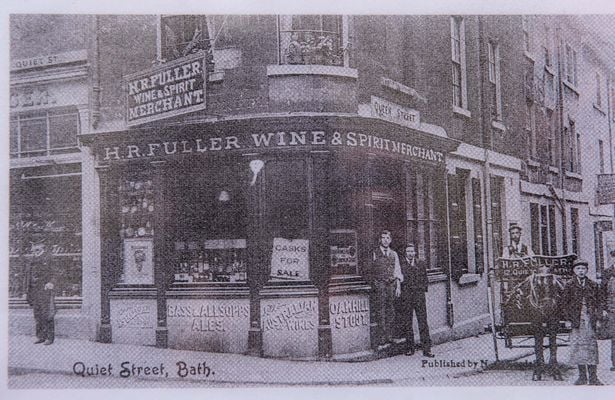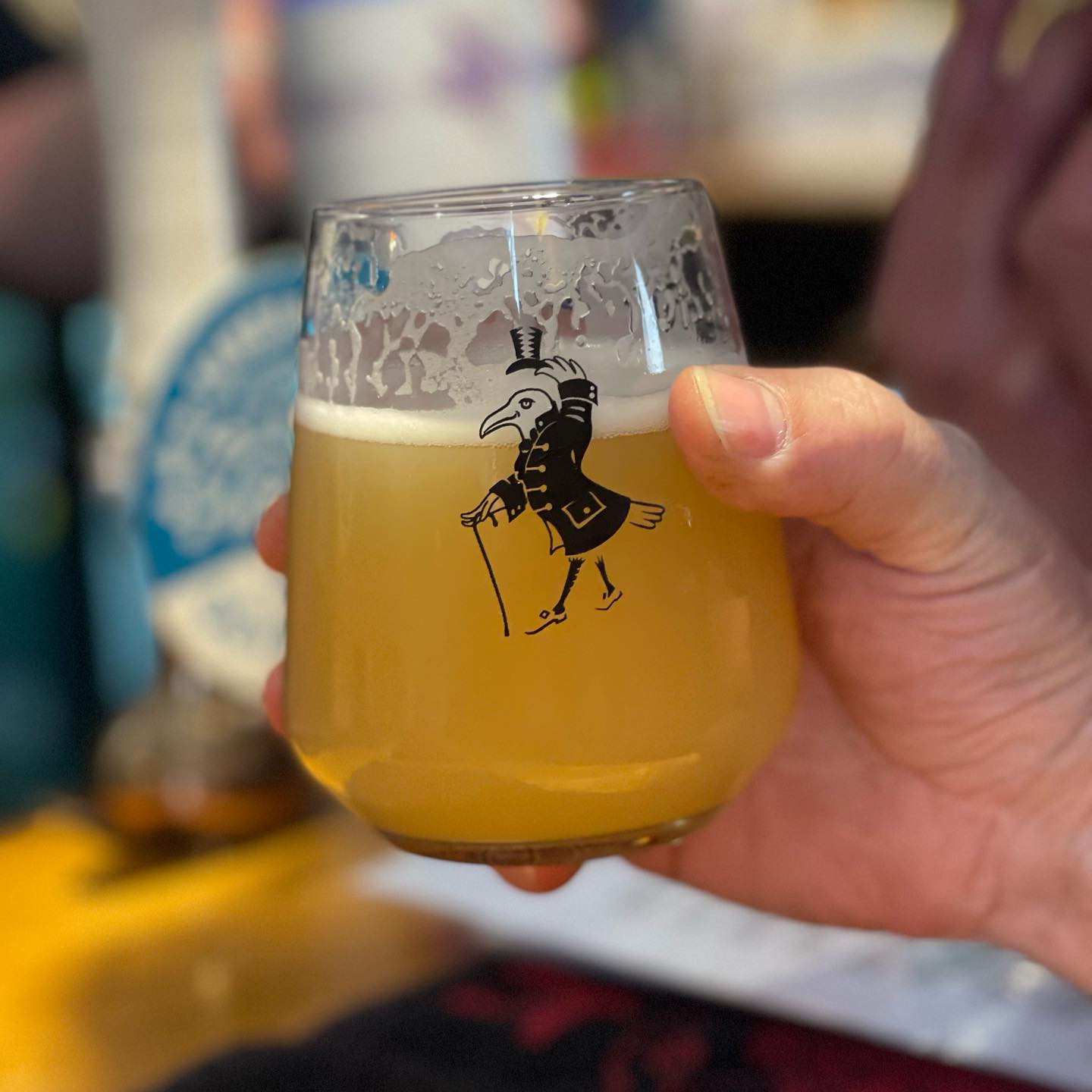
History of The Raven
While the exact history of the Roman and Pre-Roman settlements remains uncertain, we do know that in the 17th century, the area where The Raven now stands was part of Barton Farm's farmland, just a short distance to the north.

The History
According to a 1735 map, our location was once a narrow garden. It's likely this garden was lower than the surrounding streets because the Georgians had a clever way of building cellars at ground level and then adding a new street on top, saving themselves from extensive digging.
The walls of the underground section today match the recorded shape of the old garden wall, not the house that was built over it. The cellars under the street, which form vaults, appear to be a later addition. They snugly fit against the building's wall instead of seamlessly integrating. This suggests they likely built on top of the garden wall, rather than tearing it down.
So, in essence, the entire building rests on an ancient garden wall. A classic Georgian construction approach!

A BRIEF SUMMARY OF THOSE WHO WENT BEFORE US
The history of no’s 6 and 7 Queen Street
(and a bit of no 12 Quiet Street)
17th Century and before – the mists of time
The extent of the Roman and Pre-Roman settlements is rather a matter of conjecture, but we know that in the 17th century where the Raven now stands was farmland belonging to Barton Farm, which is just a few hundred yards north of us.
1735 – come into the garden
The first reference to our site, on a map of 1735, shows us to be a long narrow garden which was probably lower than the surrounding street level. The whole building rests on the old garden wall. Typical Georgian builders!
1800 – John Jarvis and Thomas Trendell.
Mr Jarvis (no 6) was a calenderer, a man who treated fabrics to give them a gloss. Perhaps the modern equivalent would be dry-cleaning. Thomas Trendell (no. 7) was a grocer.
1819 – Robert and Thomas Carnall.
The Carnalls were butchers and in 1826 Robert’s address is given as 7 Quiet Street (which was later renamed no 12) but the rate books show that Thomas was living at No. 7 Queen Street. It may well be that this corner house had two addresses, one in Quiet Street and one in Queen Street. The plans of the building suggest that they were one and the same building.
1864 – Thomas Toleman – Mr Toleman took over the Bazaar Wine Vaults from Charles Wright, ‘Wine Merchant to the Royal Family’. From then on, the building would be in the licensed trade.
1895 – Henry Fuller – now known as Fuller’s Wine Vaults
1913 – Albert Applegate
1935 – Stuart Applegate
1939 – 1945 – During the second world war the pub was a favourite watering hole for the pilots stationed at the nearby airfield. They used to write messages on the ceiling of the upstairs bar, sadly painted over in the sixties, and occasionally get themselves into a certain amount of trouble with the police, presumably while not entirely sober.
1946 – Geoffrey Moor
1961 – Anthony Knox-Little – now known as Hatchett’s Wine Lodge. Although Mr Knox-Little was the licensee, the business was actually run by K and E Dawes who were among the leading lights of the Bath Dickens Fellowship. They would undoubtedly have known about Hatchett’s Hotel in Piccadilly, London, from whence, in Pickwick Papers, the members of the club set out for Bath.
1981– Mrs Olive Drew ran Hatchett’s, but only on one floor. What is now the upstairs bar, was her living room, with a staircase leading to the second floor.
1988 – Larry Cruxton, Hatchett’s becomes a thriving city centre pub, particularly favoured by Goths and Bikers.
2004 – The current day. The building becomes The Raven.
2022 – The pub acquires the adjoining building, extending the pub to almost double its size.

A DRINK YOUR HIGHNESS?
One of the first businesses to move in was Charles Wright, known as 'Wine Merchant to the Royal Family', who opened The Bazaar Wine Vaults at No. 8 Quiet Street.
In 1864, Thomas Toleman took over, marking the start of the establishment's transition into a licensed trade.
In 1946, Geoffrey Moor assumed the license, and the place earned its enduring name, The Spirit Vaults.
The pub's legacy endures, holding tales of pilots during World War II, whose messages on the ceiling remain a hidden treasure.
Today, The Raven stands as a cherished traditional alehouse, a testament to its vibrant history.

TRADES
In Queen Street, you'd find a community of tradesmen in the 19th century, some of whom operated shops on the ground floor.
In 1800, No. 6 was home to John Jarvis, a skilled calenderer specializing in giving fabrics a polished finish—a practice akin to modern-day dry-cleaning.
Next door at No. 7 was Thomas Trendell, a local grocer. Fast forward to 1819, and Robert Carnall took over at No. 7, shifting from groceries to butchery. In 1826, Robert Carnall's address was listed as 7 Quiet Street, whilst Thomas Carnall was documented at No. 7 Queen Street. It's possible this corner house held two distinct addresses, one in Quiet Street and another in Queen Street. The architectural plans suggest that they were part of the same building.
From then on, the corner shop at the corner of Quiet and Queen Streets primarily served as a butcher's shop until 1868, and No. 6 Queen Street saw a variety of trades come and go. The 1820s saw the completion of the south side of Quiet Street, introducing the Bazaar and additional structures. As a result, the former No. 7 became known as No. 12.


